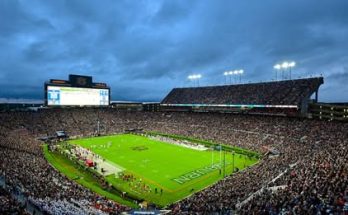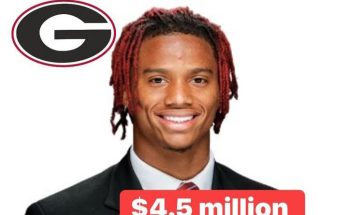In the modern era of college football, verbal commitments don’t always spell the end of a recruitment—especially not when the University of Alabama comes calling. For one highly regarded 2026 quarterback, the allure of Tuscaloosa has introduced serious pause into what once seemed like a firm pledge to Iowa State. While loyalty and early opportunity remain key factors in his current commitment, the gravitational pull of Alabama football—a program synonymous with dominance, legacy, and NFL pipelines—is proving hard to ignore.
This particular quarterback, whose name has quickly become a buzzword in recruiting circles, shocked many when he announced his commitment to Iowa State earlier this spring. At the time, it looked like a match made in football heaven: a high-upside signal-caller heading to a Power Five program eager to build its identity around a marquee playmaker. The Cyclones had recruited him hard and early, selling him on a chance to lead their offense from day one, to leave a legacy, and to develop in a system tailored to his dual-threat skillset.
But as summer approaches and recruiting heats up, Alabama has entered the picture with serious intentions. The Crimson Tide’s offer came after multiple evaluations and glowing reviews from quarterback experts within the program. The quarterback was invited for a private workout in Tuscaloosa and followed up with an unofficial visit where he and his family met with head coach Kalen DeBoer and the offensive staff. It was there, according to sources close to the family, that everything started to change.
For this young quarterback, the Alabama offer wasn’t just another scholarship—it was a validation. To be courted by a program that has produced NFL stars and consistently contends for national titles forced a re-evaluation of his future. DeBoer’s rise as an offensive mastermind, paired with Alabama’s national exposure and elite resources, presented an opportunity few could dismiss lightly.
Though Iowa State remains in his heart—and he continues to speak glowingly about head coach Matt Campbell and the program—there’s a sense that this decision has moved from “if” to “how long until.” According to those familiar with the situation, the quarterback and his family are navigating the delicate balance between honoring a commitment and considering a future that could significantly alter his trajectory.
One of the primary reasons he committed to Iowa State was stability. The Cyclones made him a priority from the beginning, attending his games, calling regularly, and building deep relationships with his inner circle. He saw Iowa State as a place where he could play early, maybe even as a freshman, and lead the team for multiple seasons without having to wait in line. That kind of long-term vision is what initially set the program apart from others.
However, Alabama presents a very different kind of pitch. The Crimson Tide don’t just promise exposure—they guarantee it. Nearly every starting quarterback for Alabama in the last decade has gone on to the NFL or at least been a Heisman contender. Tua Tagovailoa, Jalen Hurts, Mac Jones, and Bryce Young—all products of Alabama’s system—are now household names. That’s the kind of resume that Iowa State, despite its best efforts, simply cannot match.
Moreover, DeBoer’s arrival in Tuscaloosa has infused the program with new offensive life. Known for maximizing quarterback talent and developing explosive offenses at Fresno State and Washington, DeBoer has a proven track record of producing video game numbers and giving quarterbacks full control of the field. During his visit, the 2026 quarterback watched film from DeBoer’s Washington teams and was reportedly blown away by the intricacy, aggression, and intelligence of the schemes.
Another factor making this decision more complicated is the NIL landscape. Sources close to the recruitment suggest that while Iowa State has made competitive offers, Alabama’s NIL structure is simply more robust. It’s not just about cash—it’s about branding, media exposure, and access to powerful collectives that help players establish long-term financial security. In the eyes of some advisors, choosing Alabama isn’t just a football decision—it’s a business one.
Even so, this quarterback is not rushing to flip. Those close to him describe him as methodical, mature beyond his years, and deeply loyal to those who believed in him first. He’s not one to make emotional decisions or chase hype. That’s part of why he committed to Iowa State in the first place. He saw something in the program that aligned with his values: hard work, humility, and a chance to build something meaningful from the ground up.
Still, the Alabama offer complicates the picture significantly. If he were to decommit now, it would send shockwaves through the recruiting world. Iowa State would lose its cornerstone 2026 prospect, while Alabama would once again flex its recruiting muscle in a manner that reaffirms its place atop the college football mountain. But for now, he remains committed—at least publicly.
Behind the scenes, there is a growing sense that the decision could come down to how both programs perform in the upcoming season. If Iowa State can demonstrate real offensive growth and show a pathway to early playing time, it could reinforce his initial instincts. But if Alabama’s offense flourishes under DeBoer and the quarterback room becomes more inviting—with transfers or NFL departures potentially opening space—then the Crimson Tide’s case will only strengthen.
Relationships will also play a pivotal role. Iowa State’s staff has invested years into building trust, and that doesn’t evaporate overnight. Coaches have made regular visits to his high school, stayed in close contact with his family, and treated him like the future face of the program. That kind of personal connection is powerful, especially to a quarterback who values culture and community.
Alabama, though, is working to close that gap. DeBoer and his offensive coordinator are reportedly communicating regularly with the quarterback and his family. The staff has made it clear that he is a top priority, not just another name on the board. They’ve explained how his playing style would be a perfect fit for their evolving offense—how his mobility, arm strength, and football IQ mirror the kind of quarterbacks they’ve successfully developed in the past.
Another wildcard is the quarterback room itself. At Iowa State, the depth chart is far more favorable. He would likely compete for playing time right away, with only a few veterans standing in his path. At Alabama, the competition is stiffer. Elite quarterbacks arrive every year, and waiting one or two seasons before seeing the field is often the norm. That said, many believe he has the talent to rise above the pack and earn the job, even in Tuscaloosa.
Recruiting insiders say a final decision may not come until late fall or even into next spring. There’s no pressure from Alabama to flip quickly, and Iowa State continues to hold out hope that their early investment will pay off. Still, the presence of the Crimson Tide has created an undeniable shift in the quarterback’s outlook. He knows the eyes of the college football world are watching, and every move he makes from this point forward will be scrutinized.
Ultimately, this decision reflects a larger trend in college football: the growing complexity of recruiting in an era dominated by NIL, transfers, and brand power. Verbal commitments mean less than they used to, and elite programs have more tools than ever to flip prospects at any point in the cycle. For Iowa State, it’s a test of program stability and coach-player relationships. For Alabama, it’s a calculated push to add yet another elite quarterback to its already deep arsenal.
As for the quarterback himself, he stands at a crossroads—torn between the loyalty he feels to a program that saw his potential first and the opportunity of a lifetime with one of the sport’s most iconic programs. Whether he stays committed or eventually flips, one thing is clear: he’s already proven himself as one of the most poised and high-character players in the 2026 class. The final chapter of his recruitment has yet to be written, but it promises to be one of the most compelling stories in college football’s next recruiting cycle.



